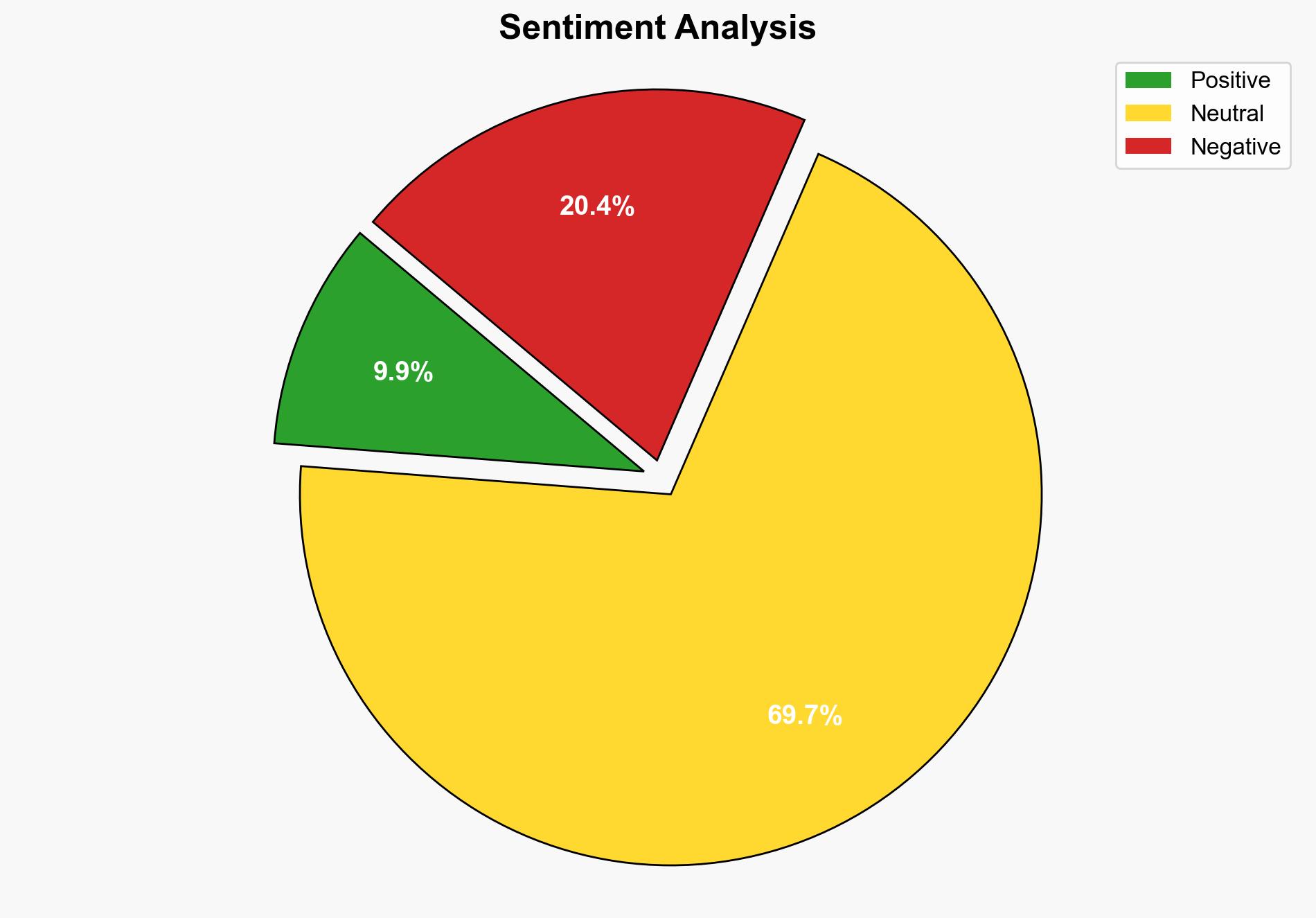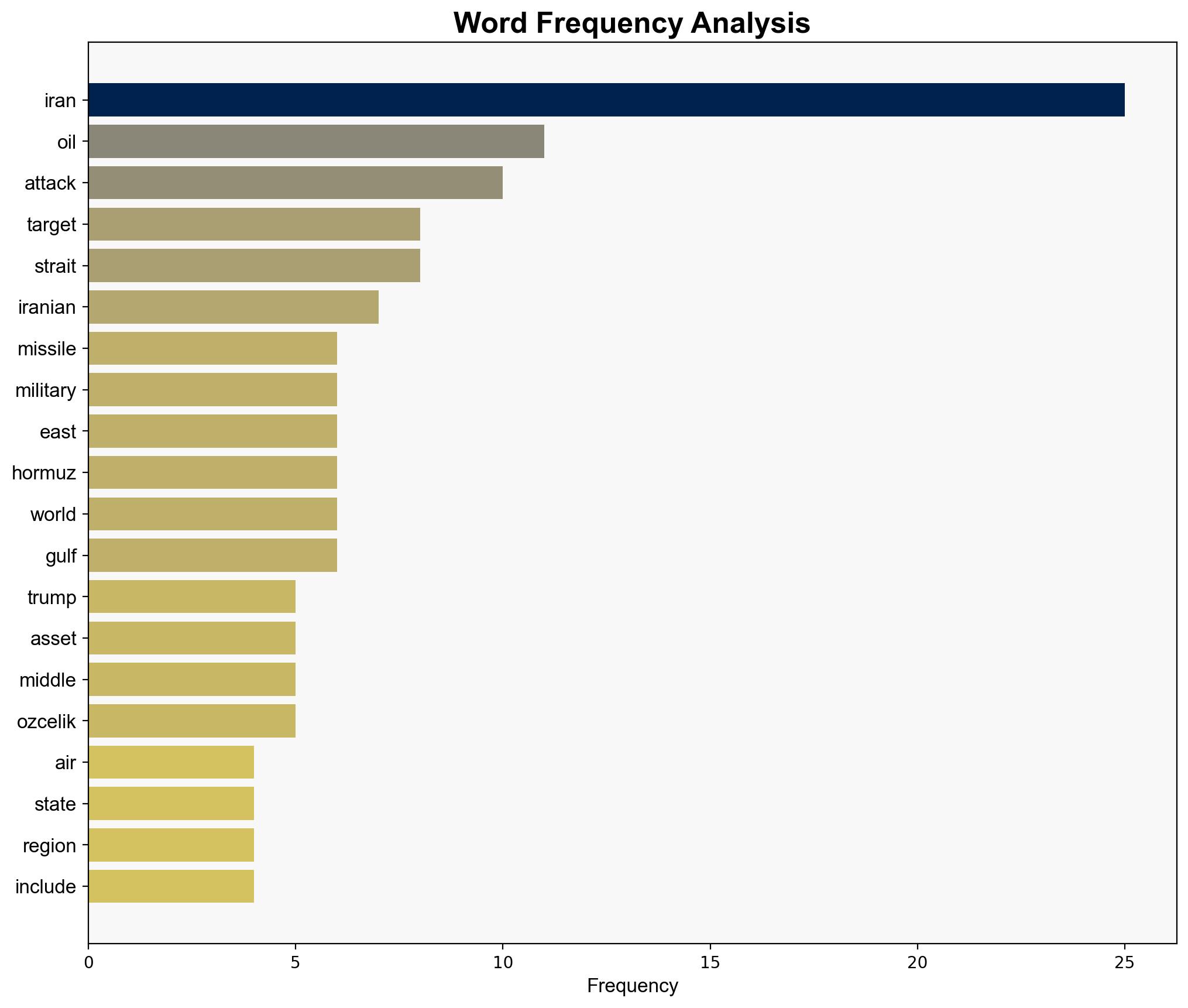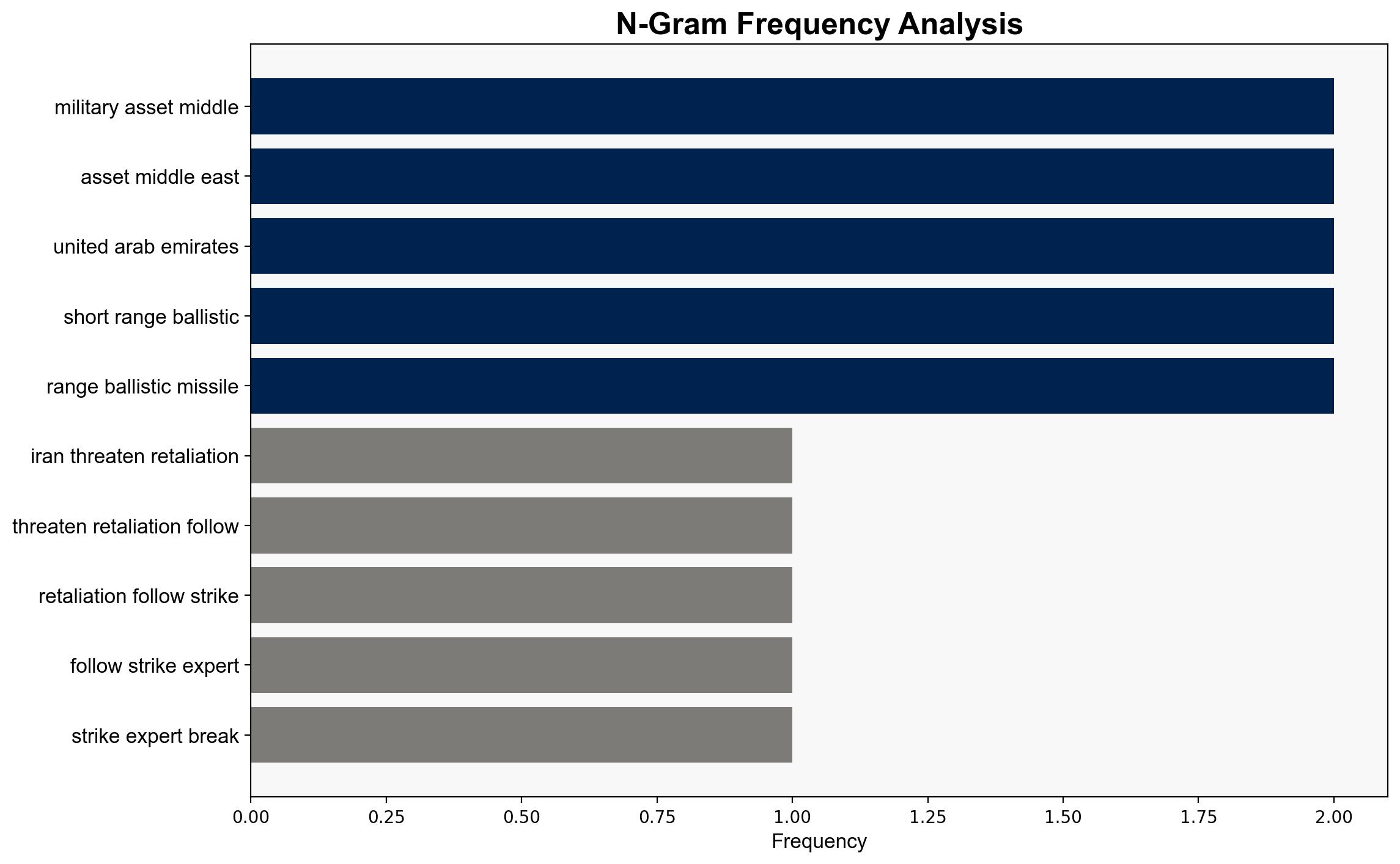Expert breaks down Iran’s possible targets for retaliation following strikes – CBS News
Published on: 2025-06-23
Intelligence Report: Expert breaks down Iran’s possible targets for retaliation following strikes – CBS News
1. BLUF (Bottom Line Up Front)
Iran is likely to retaliate against recent strikes by targeting U.S. military installations and allied assets in the Middle East. Potential actions include missile attacks, asymmetric warfare, and attempts to disrupt global oil supply through the Strait of Hormuz. Strategic recommendations focus on enhancing regional defense postures and diplomatic engagement to mitigate escalation.
2. Detailed Analysis
The following structured analytic techniques have been applied to ensure methodological consistency:
Causal Layered Analysis (CLA)
Surface events indicate heightened tensions following strikes on an Islamic State nuclear site. Systemic structures reveal Iran’s strategic positioning in the Gulf, while worldviews highlight Tehran’s perception of U.S. actions as aggressive. Myths surrounding Iran’s resilience and regional influence drive its retaliatory stance.
Cross-Impact Simulation
Potential Iranian retaliation could destabilize neighboring states, impact global oil markets, and strain U.S. alliances. Economic dependencies on Gulf oil exports create vulnerabilities for both regional and global economies.
Scenario Generation
Scenarios range from limited skirmishes to full-scale regional conflict. A restrained Iranian response may involve targeted strikes, while a more aggressive approach could include closing the Strait of Hormuz, significantly impacting global energy supplies.
Network Influence Mapping
Iran’s influence extends through Shia paramilitary groups in Iraq and potential alliances with non-state actors. Mapping these networks is crucial to understanding the reach and impact of Iranian actions.
3. Implications and Strategic Risks
The primary risk involves disruption of global oil supply, with potential economic repercussions. Military escalation could lead to broader regional conflict, drawing in multiple state and non-state actors. Cyber threats and asymmetric warfare pose additional challenges to regional stability.
4. Recommendations and Outlook
- Enhance regional defense systems and increase intelligence sharing among allies to preempt potential attacks.
- Engage in diplomatic efforts to de-escalate tensions and explore avenues for dialogue with Iran.
- Scenario-based projections: Best case – diplomatic resolution; Worst case – regional conflict; Most likely – limited retaliatory strikes with ongoing tensions.
5. Key Individuals and Entities
Burcu Ozcelik, Marco Rubio
6. Thematic Tags
national security threats, cybersecurity, counter-terrorism, regional focus





